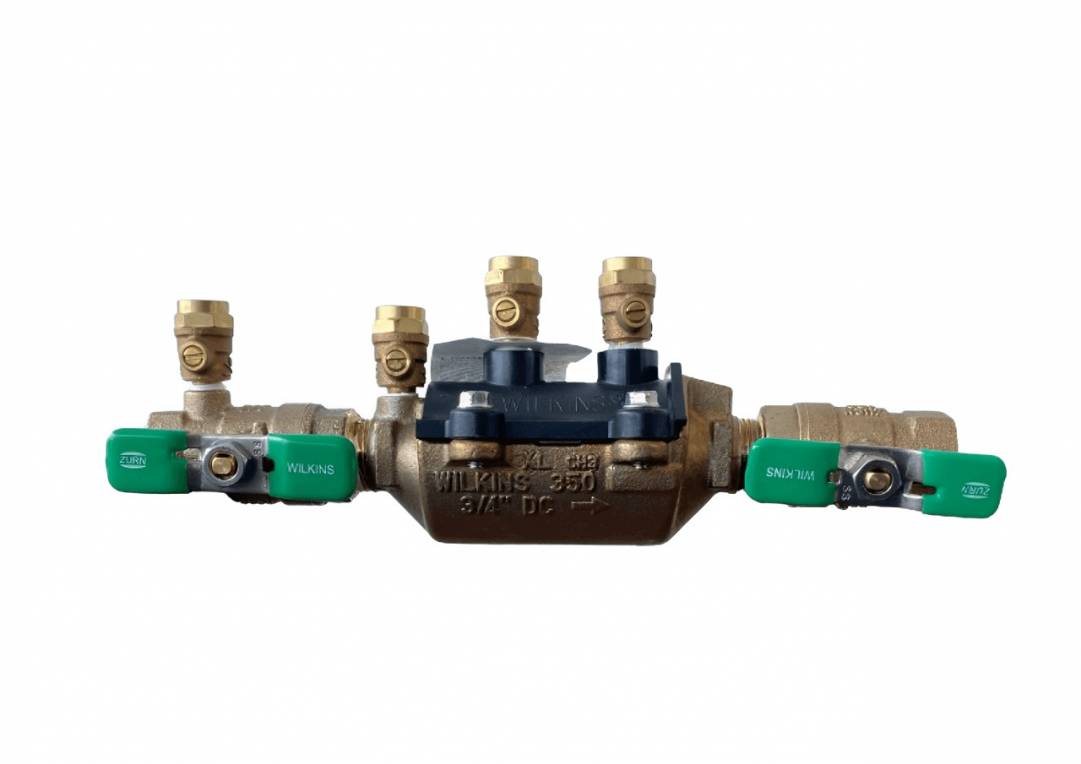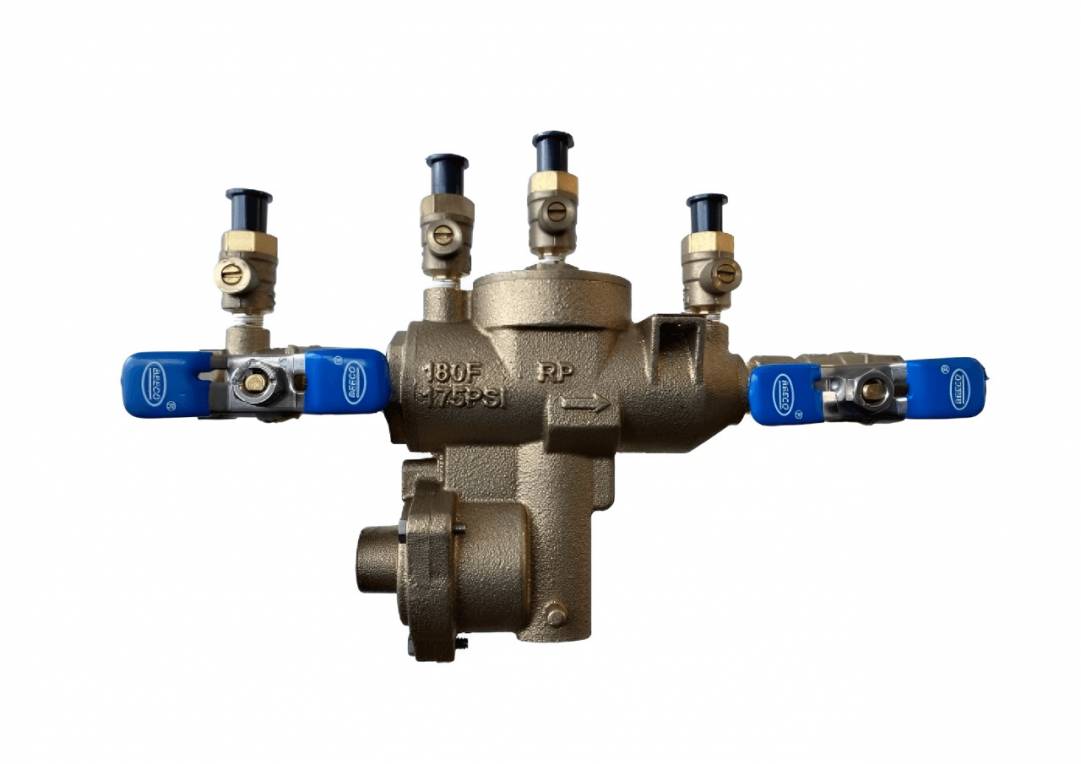
Did you know that in 2022, Quebec municipalities generated approximately $2 billion in revenue from drinking water services?1 Furthermore, Quebec benefits from an exceptional abundance of fresh water: only about 0.5% of the volume of water available on the territory is taken from it.2 This wealth of water, both ecological and economic, is a heritage that must be protected.
Thus, several policies in Quebec highlight the importance of water by considering rigorous protection and long-term preservation. Here are some of them:
With all these policies in place, it would be a shame if these efforts fail due to contamination. In this case, a cross-connection, where drinking water comes into contact with a polluted source, presents a major risk.
Backflow prevention devices (BPDs) are therefore the ideal solution for protecting drinking water since they are devices composed of mechanical valves that prevent the return of contaminated water into the supply system.6 In fact, backflow prevention devices (BPDs) are not only used to protect the water network at the municipal level, but also to ensure the quality of the water inside the building. Thus, their installation is done at the main water inlet as well as at individual sources of pollution. For example, in the event of a cross-connection between a pesticide and water, a backflow could contaminate the drinking water. Without the presence of a BPD, a person could then accidentally ingest this pesticide.


The installation of BPDs is mandatory in Quebec according to the Construction Code – Chapter III, Plumbing and the CSA B64.10 standard.7 8 In addition, the Régie du bâtiment du Québec (RBQ) requires their installation and maintenance for industrial, commercial and institutional (ICI) buildings as well as for residential buildings with more than 8 dwellings and more than 2 floors.9
Failure to comply with the regulations results in penalties of up to thousands of dollars depending on the violation. The offending party may also be responsible for the cost of decontaminating the water network. Moreover, the RBQ requires an annual certification of verifiable BPDs by an accredited field tester.6
With policies that envision rigorous protection of drinking water, it would not be surprising to see stricter requirements to preserve this resource: increased penalties, expanded monitoring and environmental fees to ensure compliance and safety of the system.
Sustainable water management in Quebec is based on rigorous policies, a solid legislative framework, and essential mechanisms such as the backflow prevention devices. Their mandatory installation prevents contamination and ensures the quality of the drinking water we consume. With increasing regulations, the protection of this resource is becoming an unavoidable priority for the future.
1. Gouvernement du Québec. (2022). Rapport annuel de l’usage de l’eau potable 2022 en bref (Stratégie québécoise d’économie d’eau potable 2019-2025, MAMH) https://cdn-contenu.quebec.ca/cdn-contenu/adm/min/affaires-municipales/publications/infrastructures/strategie_quebecoise_eau_potable/RAP_usage_eau_potable_2022.pdf
2. Polytechnique Montréal. (n.d.). Eau potable et changements climatiques : régime sec pour nos villes ? (C. Florès, Auteur). Magazine Poly https://www.polymtl.ca/carrefour-actualite/magazine-poly/eau-potable-et-changements-climatiques-regime-sec-pour-nos-villes
3. Ministère de l’Environnement et de la Lutte contre les changements climatiques. (n.d.). Stratégie québécoise de l’eau 2018-2030 et Plan national de l’eau 2023-2028 https://www.environnement.gouv.qc.ca/eau/strategie-quebecoise
4. Éditeur officiel du Québec. (2024). Loi sur la qualité de l’environnement (RLRQ, c. Q-2). Gouvernement du Québec https://www.legisquebec.gouv.qc.ca/fr/document/lc/q-
5. Éditeur officiel du Québec. (2024). Loi affirmant le caractère collectif des ressources en eau et visant à renforcer leur protection (RLRQ, c. C-6.2). Gouvernement du Québec https://www.legisquebec.gouv.qc.ca/fr/document/lc/c-6.2
6. Régie du bâtiment du Québec. (n.d.). Dispositif antirefoulement – Exigences de qualité et de sécurité https://www.rbq.gouv.qc.ca/domaines-dintervention/plomberie/les-exigences-de-qualite-et-de-securite/dispositif-antirefoulement/#:~:text=Il%20s'agit%20d'un,d'alimentation%20en%20eau%20potable
7. Régie du bâtiment du Québec. (n.d.). Code de construction du Québec, Chapitre III - Plomberie https://www.rbq.gouv.qc.ca/
8. CSA Group. (n.d.). Normes CSA B64.10 et B64.10.1 sur les dispositifs antirefoulement https://www.csagroup.org/
9. Régie du bâtiment du Québec. (n.d.). Guide sur l’accessibilité des logements d’habitation https://www.rbq.gouv.qc.ca/fileadmin/medias/pdf/Publications/francais/guide-accessibilite-logements-habitation.pdf
We use cookies to understand how you use our site and to improve your experience. This includes personalizing content and advertising. By continuing to use our site, you accept our use of cookies, terms and conditions, privacy policy. Confused? Send us an e-mail.
I acceptWe use cookies
Respecting your privacy matters to us. We use cookies to personalize our content and facilitate your digital experience. Some cookies may be collected with your consent.
Essential
Essential cookies help make a website usable by enabling basic functions such as page navigation and access to secure areas of the website. The website cannot function properly without these cookies.
Performance
These cookies enable us to analyze navigation on our sites and improve their operation.
Customization
Preference cookies enable a website to remember information that modifies the behavior or appearance of the site, such as your preferred language or the region you are in.
Targeted advertising
These cookies help us limit the number of times you see an advertisement, personalize our offers and services according to your centers of interest, measure the effectiveness of an advertising campaign, and so on. They may be shared with our partners.
We use cookies
Respecting your privacy matters to us. We use cookies to personalize our content and facilitate your digital experience. Some cookies may be collected with your consent.